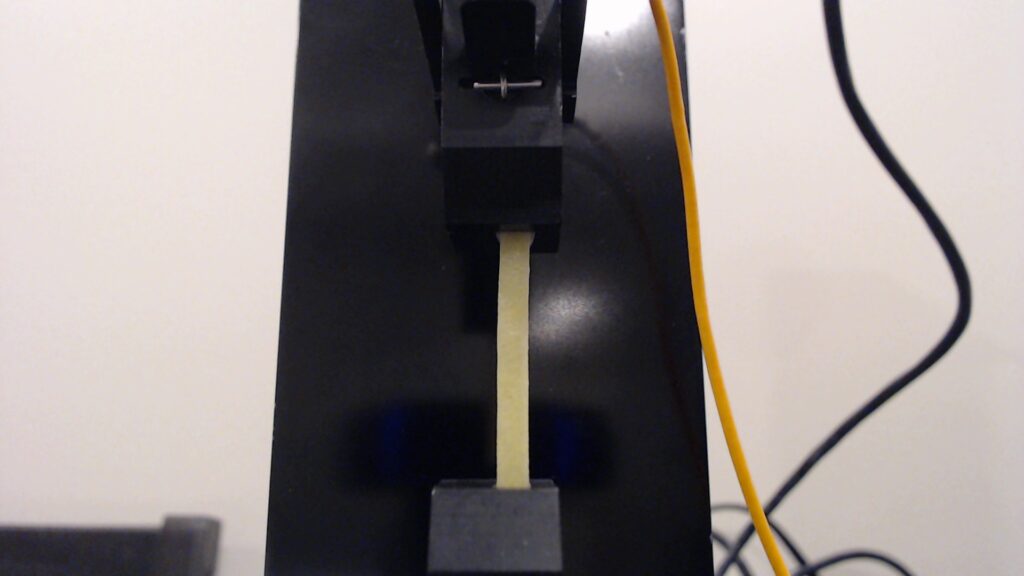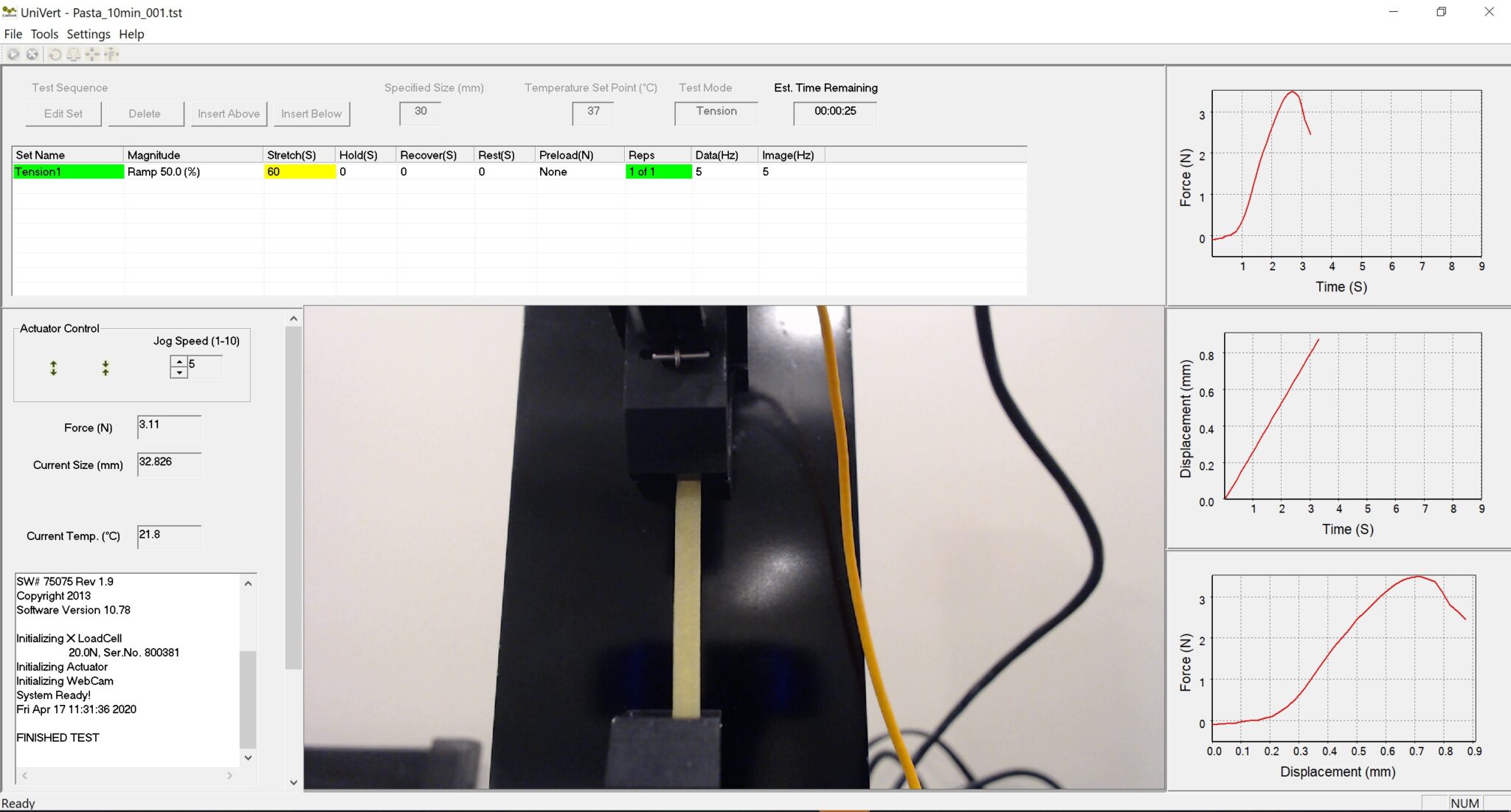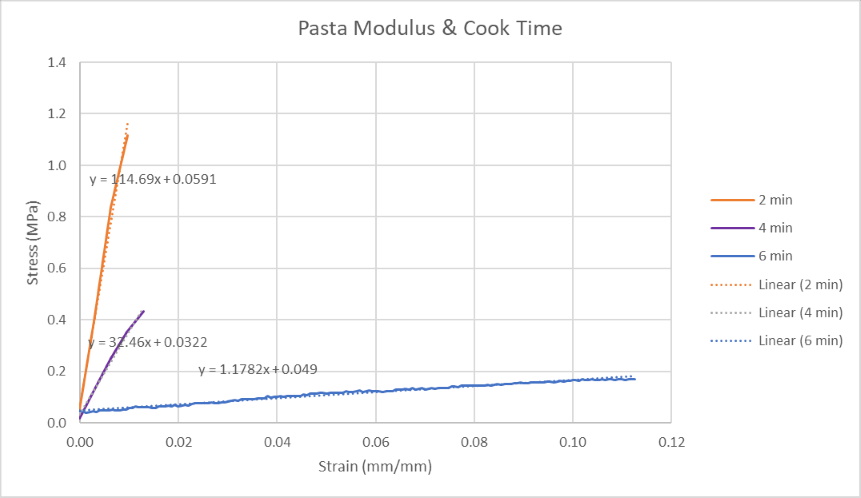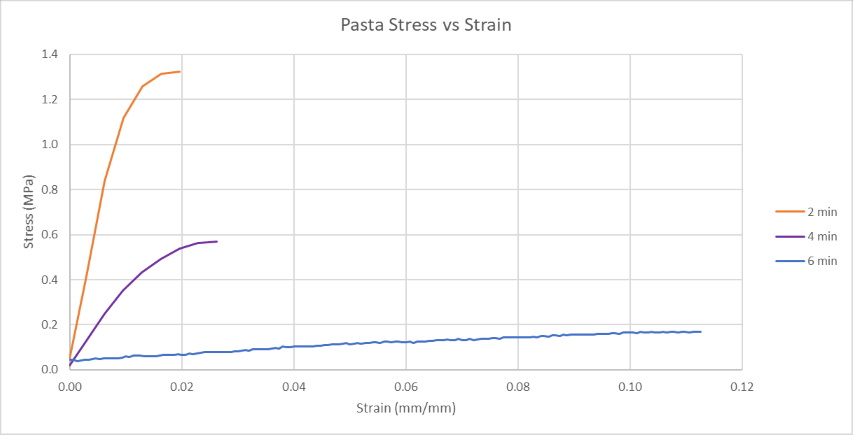Al Dente often implies pasta that is cooked firm to the bite. But the question is, how firm should it be? Why, you can only answer that question through a mechanical test!
3 samples of pasta cooked to different durations were stretched with the UniVert. Each sample was clamped gently to prevent breakage. (For more information on how to properly clamp your samples, check out this article: Tension Testing Tips and Tricks)

Next, we setup a testing protocol in the UniVert software that gives us real-time force and displacement data. This software was developed in-house and is exceptionally simple to use. Plus, we provide lifetime support for any concerns you may have about any component of our instrument.
Ready, RUN!

In addition to live graphs, data is output to a .csv files which can be easily ported into Microsoft Excel for further analysis. From force and displacement data, we can calculate stress, strain and Young’s Modulus for each of the samples. (Several websites provide more information on how to do that, here’s one we like: https://www.thoughtco.com/youngs-modulus-4176297)

From the graph above, we can infer that:
- The first pasta sample (2 mins) is the stiffest of the lot with the highest ultimate stress
- The ultimate strain greatly increases with cook time
- Gluten-free pasta actually tastes really good!
The possibilities for testing pasta are endless! We’ll consider our pasta Al Dente at 6 minutes cook time. Bon Appetit!
We hpoe you have enjoyed reading this post! Would you like us to test other household items with our instruments? Write to us at [email protected]!








